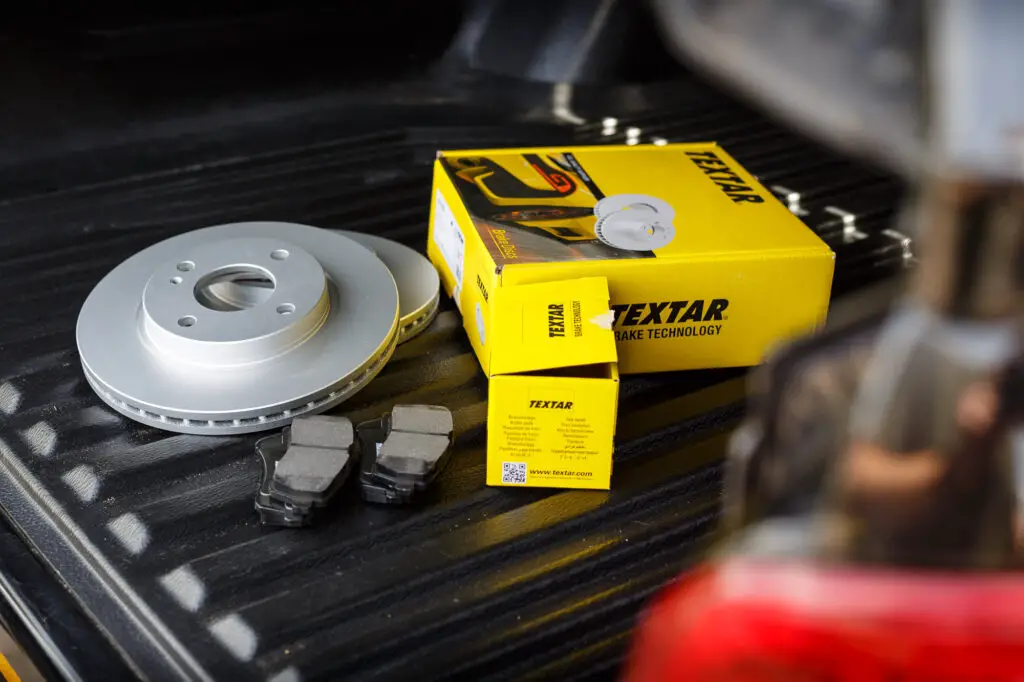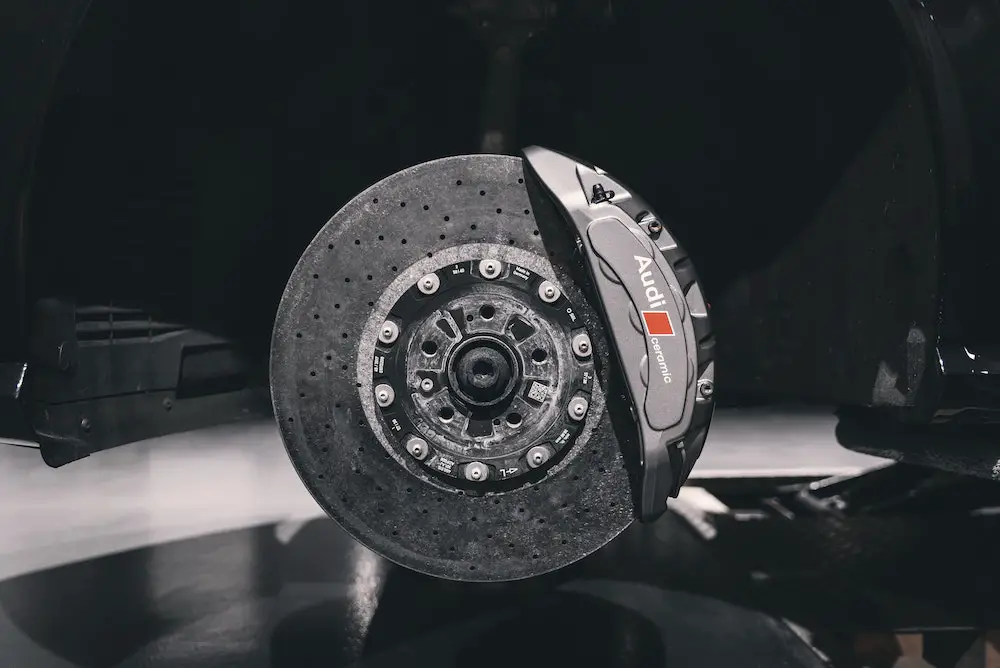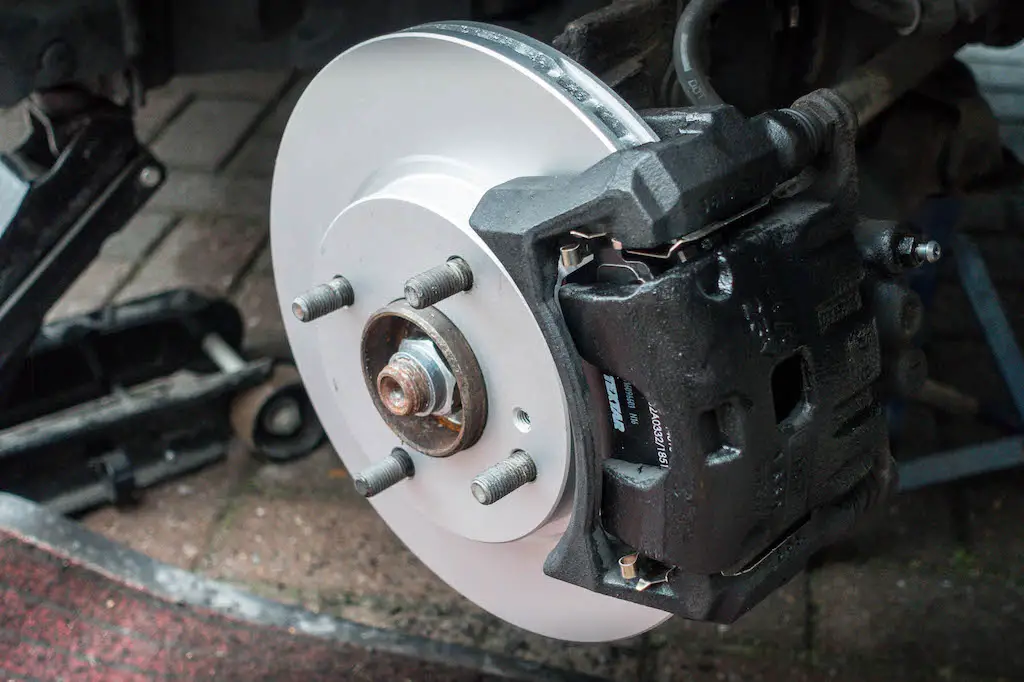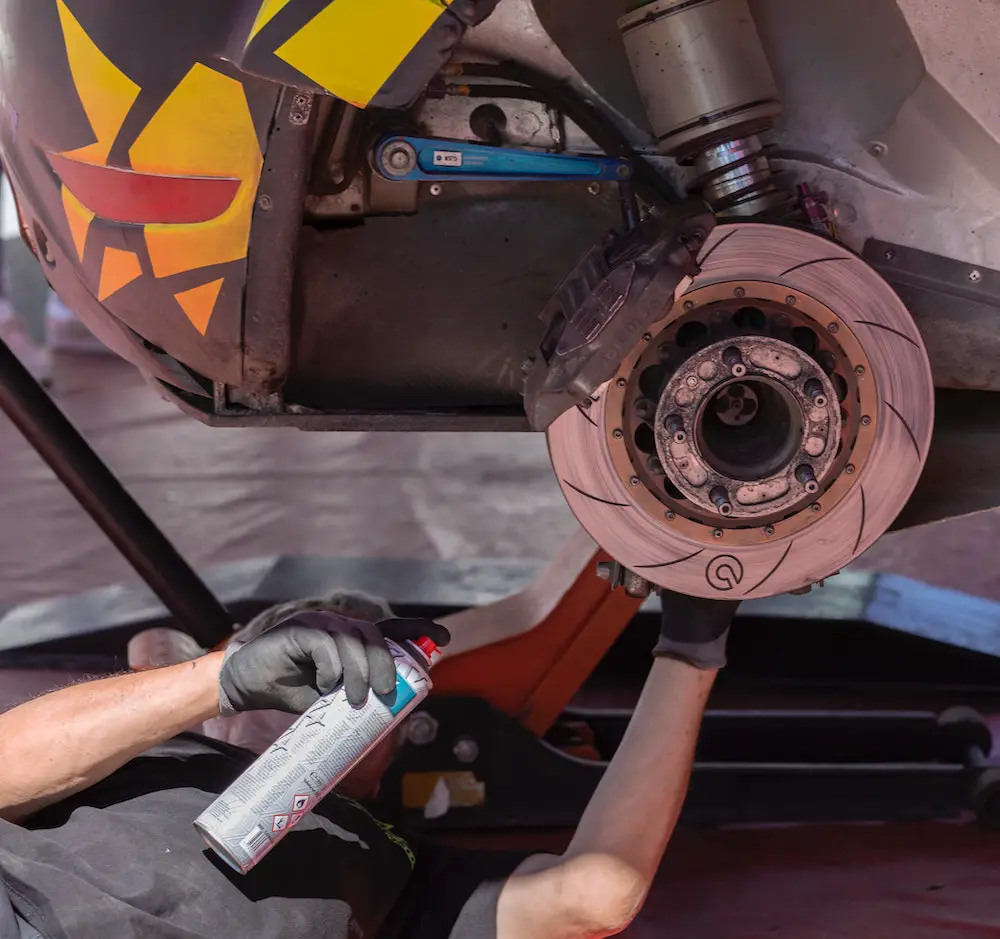Have you ever been in your automobile and noticed an odd noise coming from it? If you have heard a bad rotor sound, there is a good possibility that the defective rotors were to blame.
We’ll talk about the symptoms of bad rotors in this blog post, as well as how to fix them.
When applying the brakes, bad rotors might make a squeaking and rumbling noise. Typically, this is the first sign that something is awry. If you do, it’s crucial to have a technician look at the issue as quickly as possible.
We’ll also go over the signs of damaged rotors so you can identify the issue on your own.
- Warped Rotors
- Bad Rotor Symptoms
- Rusty Rotors
- Bad Rotors Sound
- Brake Disc Vs Rotor
- Frequently Asked Questions
Warped Rotors
Your brakes are very important. It could be challenging for the person to completely stop in time to avoid a collision due to problems.
The brakes must be serviced as soon as possible if they aren’t functioning properly.
Motorists will want to be aware of the signs of warped brake rotors and what to do if they see any of these symptoms to identify some potential brake problems as early as possible.
Bad Rotor Sound, Failure Signs #1 – Noises Made When the Car Brakes
When the brakes are used, squeaking noises might be produced by warped rotors. When they are worn down and bent, they can also generate a scraping or grinding noise.
However, worn-out brake pads might also produce a squealing sound.
When you hear squealing when you apply the brakes, your car has to be serviced to identify the problem and fix it before it becomes worse. Warped rotors and worn brake pads can both be swiftly fixed, restoring the driver’s ability to drive safely.
Bad Rotor Sound, Failure Signs #2 – Vibration When Applying Brakes
Even if the car is stopping quickly, pressing the brake pedal on your should be smooth. There may be a problem with the rotors if the pedal appears to tremble when in use.
The vibration in the pedals is frequently a sign that the rotors are warped because they won’t function as smoothly as new ones.
Although it happens less frequently than when the brakes are engaged, the tremor can also occasionally be felt in the steering wheel.
If you feel steering wheel vibration or when you apply the brakes, your car has to be serviced right away.
Bad Rotor Sound, Failure Signs #3 – Grooves On The Rotor
If the aforementioned problems (or additional problems) are present and the individual suspects that the cause may be warped rotors, they can inspect the rotors for grooves.
The rotors ought to be largely smooth, but if there are significant score marks or grooves, this might be the result of bent rotors.
This might be visible by just glancing through the tires of your car, though it might be necessary to remove the tires in order to check for grooves.
What To Do About Warped Brake Rotors
Anyone who owns a car and detects any of the aforementioned symptoms will want to get their car fixed as soon as possible.
If the rotors are deformed or broken, it’s critical to have them changed because any rotor damage reduces the vehicle’s ability to stop.
An expert will be able to inspect the brake rotors for signs of warping or damage and will be able to quickly and easily repair or replace them for the driver. You may find an impact wrench useful.
The aforementioned signs should then go away, and the driver will then notice an improvement in the quality of the braking.
Schedule Brake Service
Make sure your car is serviced right away if you’ve seen any of these signs of warped brake rotors to prevent problems when you try to stop the car.
Bad Rotor Symptoms
There are numerous ways to recognize the signs of a faulty rotor. You need to determine whether symptoms like vibration/pulsation, grooves/scoring, wobbling, blue marks, as well as grinding noises or screeching lead to faulty rotors or any other braking component by feel, sound, or visual investigation.
Bad Rotor Sound, Symptoms #1 – Brake Pedal With Pulse
Just like in the first symptom on this list, deformed, uneven, or bent brake rotors cause this one. However, the brake pedal feels the pulse more so than the steering wheel.
There’s a chance that this sensation will just be felt there, or it could spread to other areas of the car. Your rotors could be close to runout, which is another possible explanation for the pulsating.
Make sure your braking components are capable of adequate heat dissipation as one technique to assist prevent early warping of your brake rotors.
Brake parts must not overheat because the braking system generates heat due to friction to stop your car. Otherwise, the rotors might buckle and other parts might be more susceptible to damage or failure.
Sparingly replacing the rotor is likewise not a good idea. Cheaper, lighter brake parts don’t have enough material to help dissipate heat, which can only make things worse.
The best replacement brake rotors are always made of stainless steel, ceramic, or slotted brake rotors that are cross-drilled because of their higher heat tolerance and better heat dispersion.
Bad Rotor Sound, Symptoms #2 – Occasional Brake Noises
Consistent brake sounds are frequently thought to be the sound of a damaged rotor. This may not always happen, though.
To distinguish between bad rotor sound originating from a warped brake rotor as well as the peculiar sound coming from a car left overnight accumulating moisture in the open, one must have excellent hearing.
After a while of driving, this type of noise truly stops being abnormal. It’s also simple to avoid parking your car indoors when it is snowy, wet, or steamy outside.
Squealing, which is a sign of brake wear or brake pads that have worn out severely, is something to keep an eye out for.
After all, screaming or squeaking happens when the brake pad wear indicator strikes the rotor. Another cause of this noise can be a brake dust accumulation or a very unclean car.
When this occurs, service the brakes and replace the pads right away because driving while using worn brake pads is extremely dangerous.
Note also that it could cause excessive braking material that builds up on the brake rotors and overheat other brake components.
Something else to watch out for is scraping, which is a solid symptom of worn brake pads and rotors. A bad rotor sound such as scraping sounds is typically indicative of rotors with edges or deep grooves.
Bad Rotor Sound, Symptoms #3 – Grinding Upon Brake Application
Another way to tell whether the rotor is faulty is by the grinding noises or a bad rotor sound your car makes when you brake. This noise is from the brake pads which wear out through to the metal backing plate of the brake system.
The bad rotor sound comes about when the latter comes into contact and grinds into the brake rotor’s surface. Another cause is that one of your brakes has a rock or other piece of trash lodged inside it.
Doesn’t matter if the grinding sound is a result of the debris or not, it is a sign that your brake rotors are faulty and need to be changed right once.
If you believe foreign matter inside the brakes is the source of the grinding noise, get a professional second opinion.
To guarantee that the contact area that is between the brake pads and rotors is uniform on all four of your car, it is also ideal to change your brake pads at the same time.
Bad Rotor Sound, Symptoms #4 – Screeching After Installing Brake Pads
Although it may take some time for newly installed brake pads to become comfortable following installation, loud grinding noises are not typical.
This noise is a sign that your brake rotors have glazing or that extreme heat is burning the edges of your rotors. When inspecting the rotor surface, you might also notice a dark ring or even blue marks
Taking it easy when applying the brakes at higher speeds could help eliminate or greatly lessen squealing if you haven’t had your new brake pads long. If not, it might be time to change those rotors.
Bad Rotor Sound, Symptoms #5 – Score Marks Or Deep Grooves
What a bad rotor looks like is one of the most direct and obvious answers to the problem. Typically, a healthy brake rotor has a flat surface that feels and looks smooth.
The brake pads make better contact with the rotor thanks to its smooth surface, which helps keep the brake pads from wearing too deeply into the former.
A brake rotor that resembles the reverse of the description would undoubtedly make poor contact with the pads; as a result, the faulty brake rotors hamper brake performance.
Although such surface imperfections will build up over time, sometimes, they can occasionally become noticeable as a result of poor driving practices or misuse of the braking system.
It is never acceptable to delay or ignore replacing brake rotors and pads when there are grooves on the brake rotor face.
Bad Rotor Sound, Symptoms #6 – Rotors With Cracks
When brake rotors get extremely hot, cracks or gouges may form. The brake rotor then develops dents on the surface as a result of the excessive heat.
If the cracks are simply surface-level, they don’t affect how well the brake rotors work. Deeper cracks, however, present larger concerns and might even be precursors to a brake rotor splitting in two.
It is not advisable to utilize the brake rotor till it runs out, unlike tires, which you should replace once they wear out to the maximum amount of tread.
You have most certainly already encountered significant inconveniences in stopping your car before you even get to that point. It wouldn’t make sense to keep driving your automobile with a damaged brake disc, much alone be risky.
Bad Rotor Sound, Symptoms #7 – Blue Discoloration
Your rotors’ blue marks typically appear before more serious problems including rotor cracks, broken brake shoes and calipers, and uneven brake pad wear.
The discoloration results from either insufficient heat dissipation by stock brake components, excessive heat due to riding brakes, brake calipers that are improperly aligned, or both.
Sometimes it happens even when there is no activation of the braking system because of unexplained pressure on the pads.
You should check your car’s brakes if you notice any blue rotors.
It is always best to ascertain which of the aforementioned parts needs to replacement or repair as soon as possible to avoid more severe braking system problems.
Veterans advise switching to ceramic brake pads and cross-drilled slotted rotors for rotors to optimize heat dissipation.
Bad Rotor Sound, Symptoms #8 – Deterioration
Due to moisture buildup within the car and in its brake system components, especially when you leave the car outside, temporary rust formation can often happen during the winter or the rainy season.
Parking a well-maintained car in the garage, however, is a different matter. Replace your brake rotors as soon as possible if you spot rust developing around their outer edge.
Rough braking and grinding noises might result from minor corrosion on the rotor surface if you ignore them. Additionally, the brake pads, contact region, or vanes would have rust pitting.
In the worst case, excessive rust caused by oxidation can cause the brake rotors to become stuck, making it very challenging for the vehicle owner or a qualified mechanic to remove and replace them.
Rusty Rotors
Rotten brake rotors may appear hazardous. We are all aware that our brakes are the only thing preventing an accident, so it is wise to look into anything that doesn’t seem right.
The majority of brake rotor rust is not a problem, which is good news.
When Not To Worry About Rusted Brake Rotors
If you regularly use your car and the brakes stop the car as they should, there may be no issues.
The majority of passenger automobile brake rotors comprise oxidizing iron-based metals (think steel and iron). This is rust. There are several ways the rotors’ rust can manifest themselves.
Your car’s rotors are visible if you look through the wheels. The brake calipers clamp them as the ring.
The calipers do not, however, completely clamp the rotor. They only touch the inner 60% or 70%. It’s usual for the ring to have rust on either the inside or outside.
You shouldn’t be concerned if there has just been raining, the humidity is high, or if you washed your car in the driveway and noticed rust on the rotors (see image at top of page).
This is only surface oxidation, and it takes only a few hours to occur. Your pads will clean it off while you are driving, so there won’t be any issues.
When To Have Rusted Brake Rotors Checked
It is worthwhile to have your brake rotors serviced if only one of them has surface rust and not all three. There could be a problem with one of the calipers making contact with the rotor. A caliper might be trapped.
The rotors can develop surface rust that is more challenging for the pads to remove if you store a car for months or longer.
If you store a car and the brakes are faulty, it’s wise to budget for new rotors and pads.
You can find out if they require maintenance from a mechanic.
Bad Rotors Sound
When you press the brakes, you can hear a squeaking or grinding sound if your car’s rotors are faulty. The pads vibrate as they press on the twisted rotor, which produces this noise.
The more time you give the issue, the more likely it is that the noise will worsen.
When the pads wear, you will hear a metal-on-metal scraping sound. If this occurs, it’s crucial to swap out the rotors right away.
Damaged rotors might also bring on vibrations in the steering wheel. A twisted rotor frequently brings this on. The more time you give the issue, the worse the vibration will likely become. It may eventually result in further damage.
It’s crucial to get a professional to check your car as soon as you notice any of these symptoms. Bad rotors can eventually result in more serious issues if you do not address them.
Does A Bad Rotor Sound Like Bad Brake Pads
No, bad rotor sound doesn’t always sound like a terrible set of brakes. But if you hear squeaking or grinding noises when you press the brakes, it’s crucial to have your automobile examined by a professional because that sounds is indicative of worn brake pads or a damaged disc.
Brake Disc Vs Rotor
The following common brake replacement components are probably familiar to you: pads, shoes, discs, rotors, and drums. You’ve come to the right place if you’re not sure what these components are or what they do.
While there are more parts at play in stopping your car, the ones listed above make up the main worn components that need changing during the service.
Difference Between Disc Brakes And Drum Brakes
To start, let’s define which terms apply to which braking system. Disc brake wear components, to put it as simply as possible, are brake discs and brake pads.
The brake calipers press the brake pads on the rotor face under the influence of hydraulic pressure to stop the wheels.
Imagine the brake pads on either side of the rotor face as the caliper clamping down on the rotor. Keep in mind that rotors are another name for brake discs. They are identical to one another.
Brake shoes and brake drums make up drum brake systems. In this instance, the hydraulic system causes the brake shoes to push outward against the inner surface of the brake drum when the driver depresses the brake pedal.
What Brake Types Are In Your Vehicle
Most modern cars have four-wheel disc brakes, which means that the front and rear brakes are both disc brakes. However, certain automobiles still use rear drum brakes.
They are particularly prevalent in older or smaller autos.
You may nearly be sure that your car has disc brakes up front. You should be able to see an exposed brake disc with a brake caliper partially covering it. This is if you look through the front wheels of your car.
The brake pads are inside the caliper.
When checking inside your rear wheels, you can discover components that are comparable (but smaller) or you might discover something that appears to be a little different. Less will be visible if the back brakes are drum brakes.
No exposed braking surface exists. The shoes and hardware are inside a sturdy drum.
Disc Brake Or Drum Brake: Which Is Better
Brake discs are becoming more and more popular these days. Due to this, you have probably already realized correctly that they are better.
Drum brakes had a significant problem with overheating, which led to the development of disc brakes.
The brake drums completely enclose the brake shoes. Due to this, there is nowhere for the intense heat from the friction between the shoes and drums to escape.
The performance drastically declines as the brakes become overheated. You can also refer to this as brake fade.
Better heat dissipation and hence more consistent braking performance are thanks to the brake discs. So why aren’t 4-wheel disc brakes standard on all cars?
Drum brakes are still less expensive, so some manufacturers employ them to keep the price of their vehicles low when they are suitable.
Since the front of the automobile provides most of the stopping power, they only use them there. Even though disc brakes are the best, vehicles with rear drum brakes can nonetheless stop you without endangering your safety!
Frequently Asked Questions
How Long Do Rotors Last
Although your car’s rotors are among its most robust components, the aforementioned conditions may reduce its lifespan. Depending on the aforementioned variables, you can anticipate your rotors to last somewhere between 30,000 and 70,000 kilometers (which is around 18,000 miles to 43,000 miles).
What Are Rotors On A Car
How do rotors work? Rotors are the big metal discs that are located inside each wheel and are an essential component of your car’s braking system. The axle of the car fastens the rotor to the wheel, which is a component of disc brakes. They might be noticeable, depending on how your hubcaps are made.
Why Are My Brakes Grinding After New Pads And Rotors
After getting new rotors and brake pads, your brakes may still grind. Possible causes include a layer of corrosion brought on by moisture, a change in the metallurgy of the brake pad’s surface, a little lubrication at the contact areas of the calipers, and brake clips that are misaligned.




